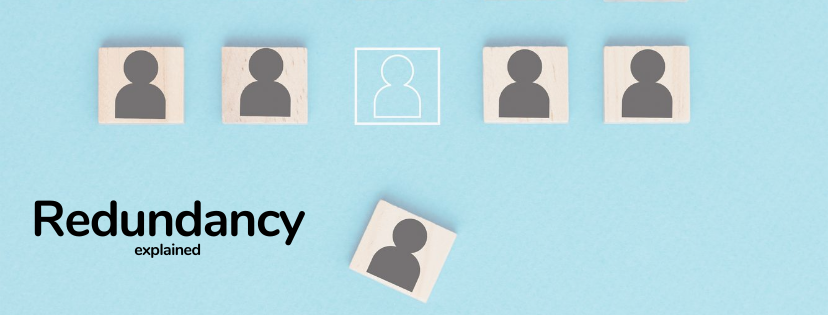Redundancy Pay If Company Goes Bust: Recognizing Your Privileges in the UK
Redundancy Pay If Company Goes Bust: Recognizing Your Privileges in the UK
Blog Article
Checking Out the Interaction Between Firm Redundancy and Business Adaptability for Future Growth
In the dynamic landscape of today's service globe, the intricate partnership between firm redundancy and organizational flexibility arises as an important aspect for continual development and success. Business commonly face the obstacle of striking a delicate equilibrium between keeping a level of redundancy to reduce dangers and fostering flexibility to respond quickly to the ever-evolving market demands. This fragile interplay holds the essential to not just making it through in rough times however additionally flourishing despite uncertainty. As we discover the complex measurements of this interplay, fascinating insights right into how organizations browse these intricacies to lead the means for future development wait for.
Relevance of Firm Redundancy
Business redundancy is an essential aspect that enhances organizational resilience and reduces functional dangers. By integrating redundancy procedures within the organizational framework, companies can better stand up to unforeseen disruptions and changes in business environment. Redundancy functions as a critical buffer, enabling business to adjust and react successfully to unanticipated challenges without endangering crucial operations.
One trick facet of the significance of business redundancy is its role in ensuring continuity during times of situation. When confronted with abrupt adjustments or emergencies, repetitive systems, sources, or workers can tip in to maintain vital functions and protect against extensive disturbances. This continuity not just safeguards the company's credibility and consumer trust however likewise reduces financial losses and functional downtime.

Methods for Organizational Versatility

Producing versatile organizational structures that allow for quick changes to market characteristics and client requirements is vital for remaining competitive in a rapidly evolving atmosphere. By proactively recognizing potential disruptions and possibilities, companies can proactively prosper and adjust in an ever-changing service landscape.
Harmonizing Redundancy and Flexibility
Attaining a harmonious stability in between functional redundancy and business versatility is critical in browsing the complexities of a vibrant service atmosphere. Redundancy within a business provides a security net, guaranteeing connection and security in operations. Nonetheless, an unwanted of redundancy can cause inadequacies and impede versatility to altering market problems. On the other hand, business versatility permits firms to respond quickly to external disruptions and seize new opportunities. Striking the best equilibrium in between redundancy and flexibility is a fragile process that needs a deep understanding of the organization's objectives, industry dynamics, and danger resistance.
To achieve this balance, business require to carry out normal assessments of their operations to determine locations where redundancy is necessary for risk mitigation and where versatility can drive innovation and growth. Implementing flexible structures, fostering a society of continuous learning and enhancement, and urging open interaction throughout all degrees of the company are vital strategies to balance redundancy and versatility effectively. By straightening these 2 vital elements, firms can place themselves for sustainable growth and success in an ever-changing service landscape.
Instance Research Studies on Adjustment Success
In examining instances of successful business adaptation, it becomes obvious that the interplay between functional redundancy and adaptability is a specifying aspect in shaping durable businesses. A DVD rental solution, Netflix showed amazing versatility by transitioning right into a streaming system when digitalization disrupted the industry. These instance studies highlight the significance of functional redundancy combined with business flexibility in fostering lasting development and competitiveness.
Structure Strength for Future Growth
Structure durability for future growth calls for a critical alignment of functional processes with market published here characteristics and arising patterns. Business need to adapt to transforming environments by fostering a culture of flexibility, development, and continuous improvement. Strength entails not just getting better from problems yet additionally proactively planning Get More Information for future challenges. One vital facet of building strength is buying durable threat monitoring approaches to alleviate potential interruptions. This consists of scenario planning, expanding supply chains, and establishing contingency prepare for different contingencies (who pays redundancy money).
Moreover, fostering solid connections with stakeholders, such as consumers, workers, vendors, and the neighborhood, is necessary for preserving and weathering unpredictabilities depend on and support throughout rough times. Reliable interaction and openness play a crucial function in building resilience, as they assist line up expectations and promote collaboration in navigating unpredictabilities.
Additionally, organizations need to focus on learning and development efforts to upskill employees and outfit them with the essential devices to adjust to transforming situations. By spending in their workforce, companies can boost their adaptability and agility, eventually enhancing their resilience for sustainable future growth.
Conclusion
In the vibrant landscape of today's company world, the detailed relationship between company redundancy and organizational flexibility arises as a vital variable for continual growth and success. Companies often encounter the challenge of striking a delicate equilibrium between maintaining a degree of redundancy to reduce threats and promoting flexibility to respond promptly to the ever-evolving market needs.To accomplish this balance, companies need to carry out routine analyses of their operations to determine locations where redundancy is required for Recommended Site danger reduction and where versatility can drive advancement and development.In verdict, the interplay between business redundancy and organizational adaptability is critical for future growth. Building durability with a combination of redundancy and flexibility will certainly ensure that business are prepared for the difficulties of the future.
Report this page